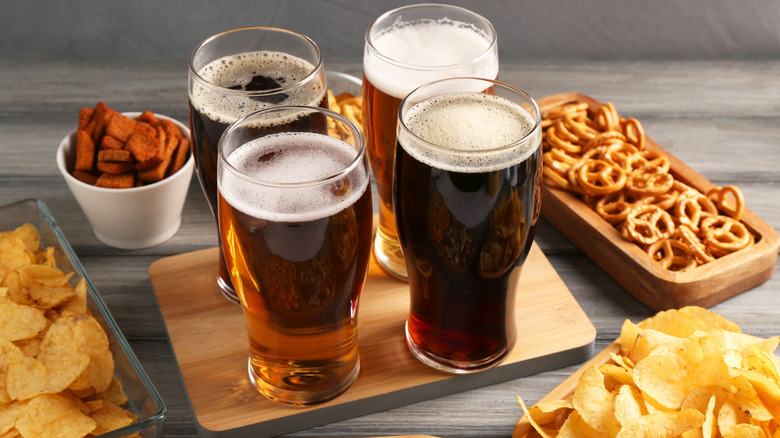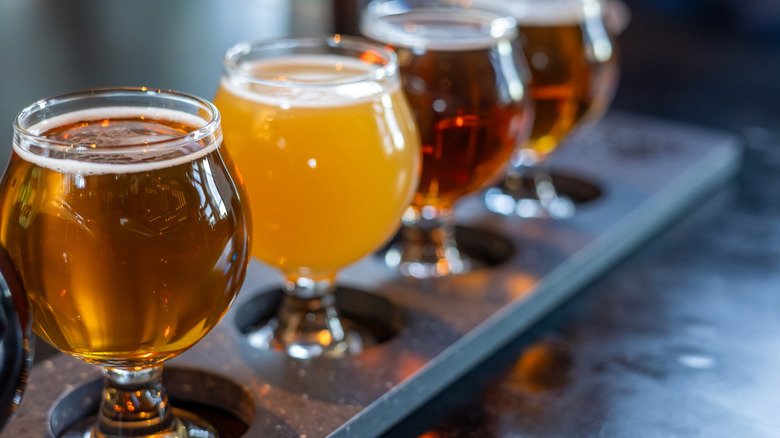Ale Vs Lager: What Makes Them Different?
The big difference between ales and lagers — which are not technically styles of beer, by the way — comes down to how the two beverages are brewed. Essentially, all beer consists of water, malt, hops, and yeast. When it comes to determining an ale as opposed to a lager, it all comes down to that last ingredient: yeast.
Ale production uses yeast known as Saccharomyces cerevisiae, which collects near the top of the tank at relatively warm temperatures between 60 and 70 degrees Fahrenheit for a relatively short period of time. These conditions tend to produce a beer with a more robust taste.
Lagers, on the other hand, are generally made with Saccharaomyces pastorianus yeast. This is a bottom-fermenting type of yeast which allows brewing at a colder temperature (usually between 40 and 50 degrees Fahrenheit). The cooler environment stretches out the brewing time and gives lagers a more mild flavor and crisp mouthfeel. Lagers also tend to have a more bubbly foarm than the top-fermenting ales.
What else makes ales and lagers different?
The name lager originates from the German word lagern meaning "to store." It's an appropriate name because of the slower brewing process compared to ales. This distinction has also made ales more prevalent some breweries simply because of a faster turnaround time.
Also note that there tends to be a lot of variety with ales. There are stouts and porters, saisons, amber ales, pale ales, brown ales, and even the famously hoppy and sometimes even almost cannabis-tinged India pale ales (more commonly known as IPAs). Of course, other factors come to play here, too, from the exact composition of the grains in the mash, to the amount of hops used to produce a resinous, bitter edge (along with other ingredients), to all the add-ins a brewer might bring to the tank. Lagers have some of this wiggle room, too.
Flavor also distinguishes a lager from an ale. The latter tends to be more fruity tasting (though, again, brewers can do a lot to change the character of a beer). Lagers also typically have less alcohol by volume than their ale counterparts.

